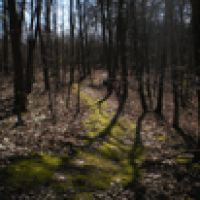Lin & Zhang, 2011
Subsurface Lateral Flow and Hillslope Hydrologic Connectivity in the Shale Hills Critical Zone Observatory (Invited)
Lin, H., Zhang, J. (2011)
AGU Annual Fall Conference Proceedings
Abstract
Subsurface lateral flow (SLF) has been observed to contribute substantially to hillslope and catchment runoff. Understanding the occurrence and frequency of SLF is therefore fundamental to watershed management. We monitored real-time soil moisture dynamics at multiple depths and several locations along a concave hillslope to investigate the timing and frequency of SLF. By comparing the storage increase in each soil horizon and total storage increase at each site with rainfall amount, we obtained the direct evidence of SLF. The results showed that SLF was ubiquitous at all monitoring sites and 52% of the 97 rainfall events analyzed produced SLF. However, individual site showed spatial and temporal variation in the occurrence of SLF, which was related to soil type, hillslope location, rainfall, and initial soil moisture. Our results clearly showed a rainfall threshold to initiate SLF, which ranged from 1.1 to 2.3 mm from wet to dry seasons. Although SLF occurred frequently in each site, only 9 out of the total 97 rainfall events showed the hydrologic connectivity from the hilltop to the valley floor. Under wet conditions, only 1.1-2.3 mm rain can connect SLF from the hilltop to the valley floor, while under dry conditions 14.6 mm rain is needed to deliver
rainwater from the hilltop to the valley floor. We found that soil layers where SLF most likely to occur varied among soil types and hillslope locations. The SLF in the shallow Weikert soil occurred more frequently in the R horizon, while that in the deep Rushtown soil occurred frequently in the Bw and C horizons. These results have implications for whole landscape system response under changing climate and land use, which will be discussed in this presentation.
Citation
Lin, H., Zhang, J. (2011): Subsurface Lateral Flow and Hillslope Hydrologic Connectivity in the Shale Hills Critical Zone Observatory (Invited). AGU Annual Fall Conference Proceedings.
 This Paper/Book acknowledges NSF CZO grant support.
This Paper/Book acknowledges NSF CZO grant support.
Explore Further


